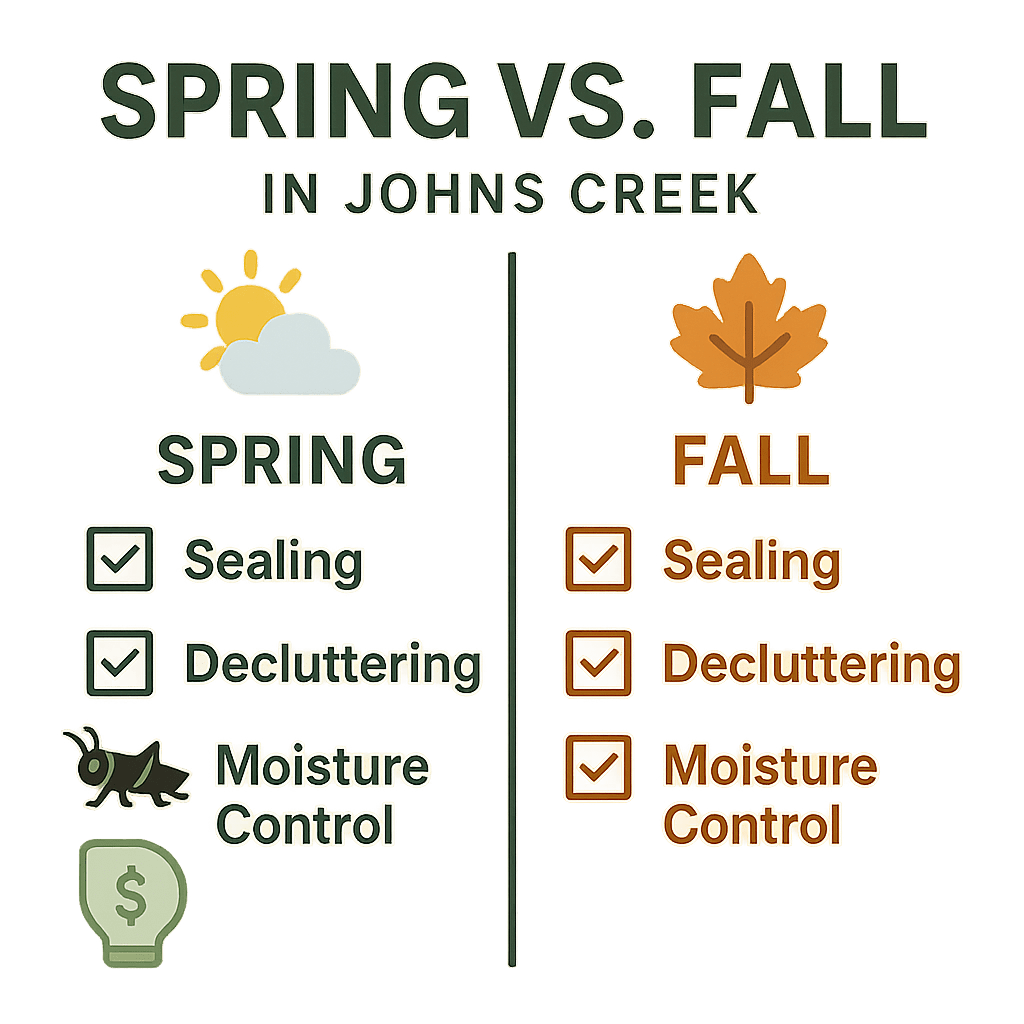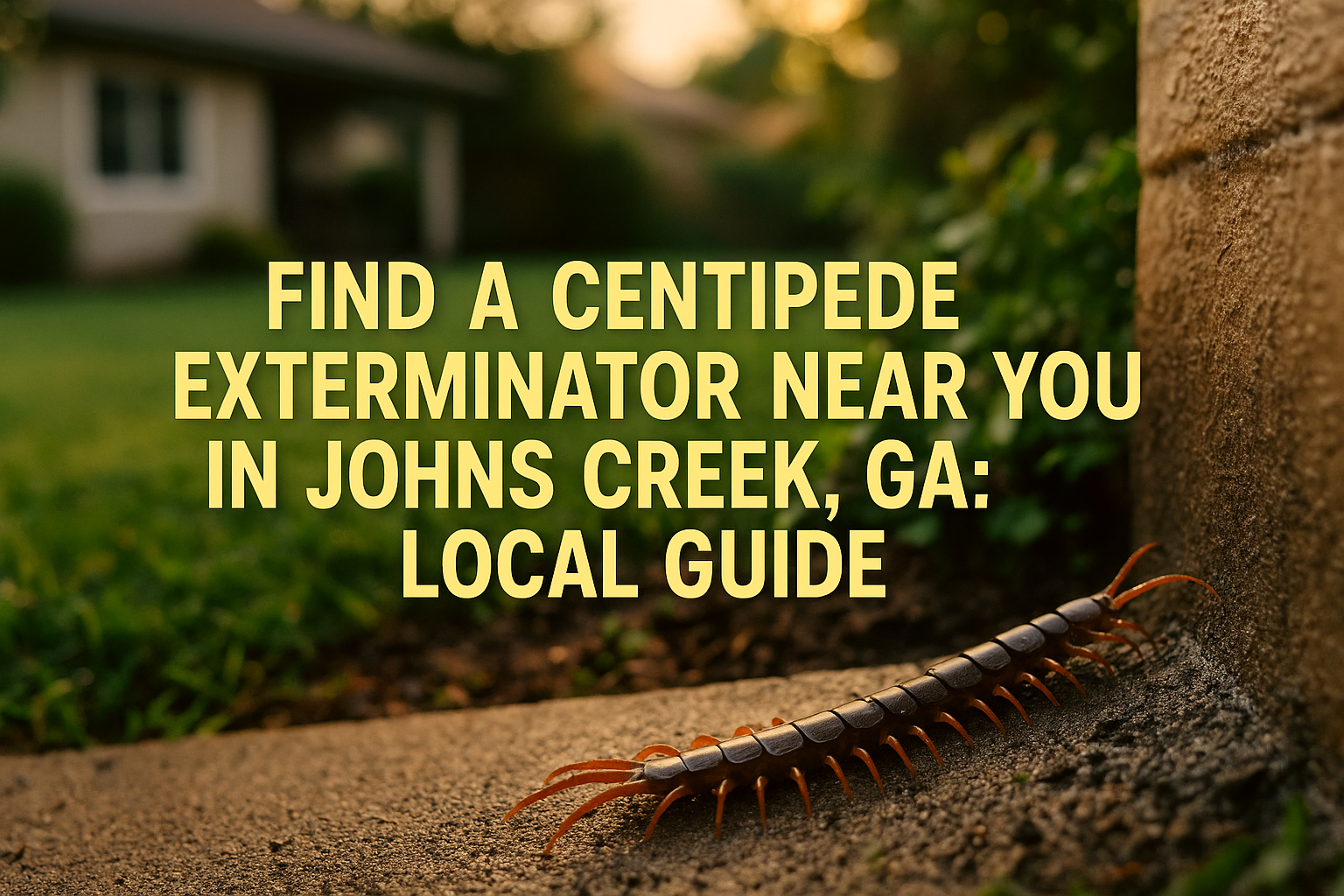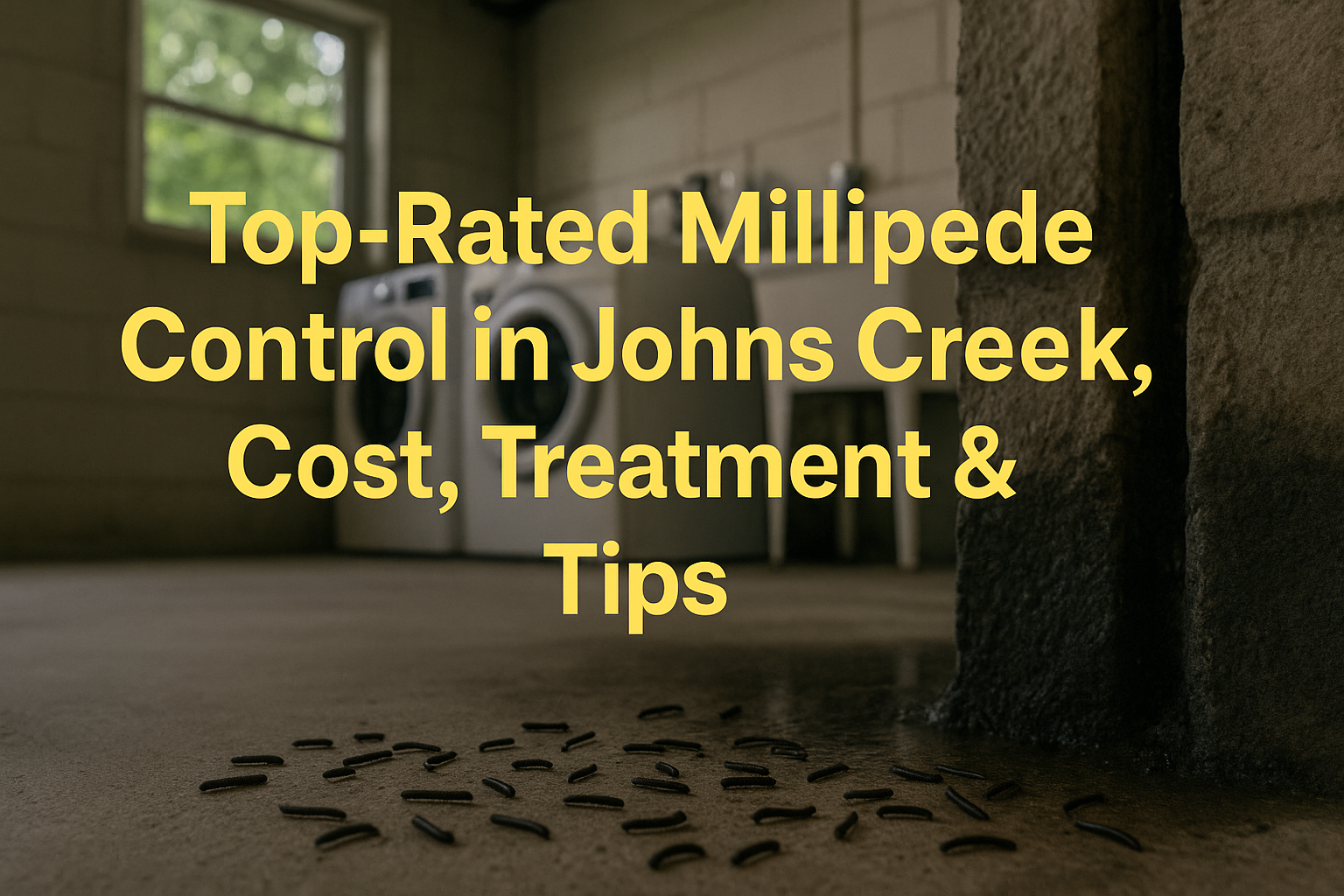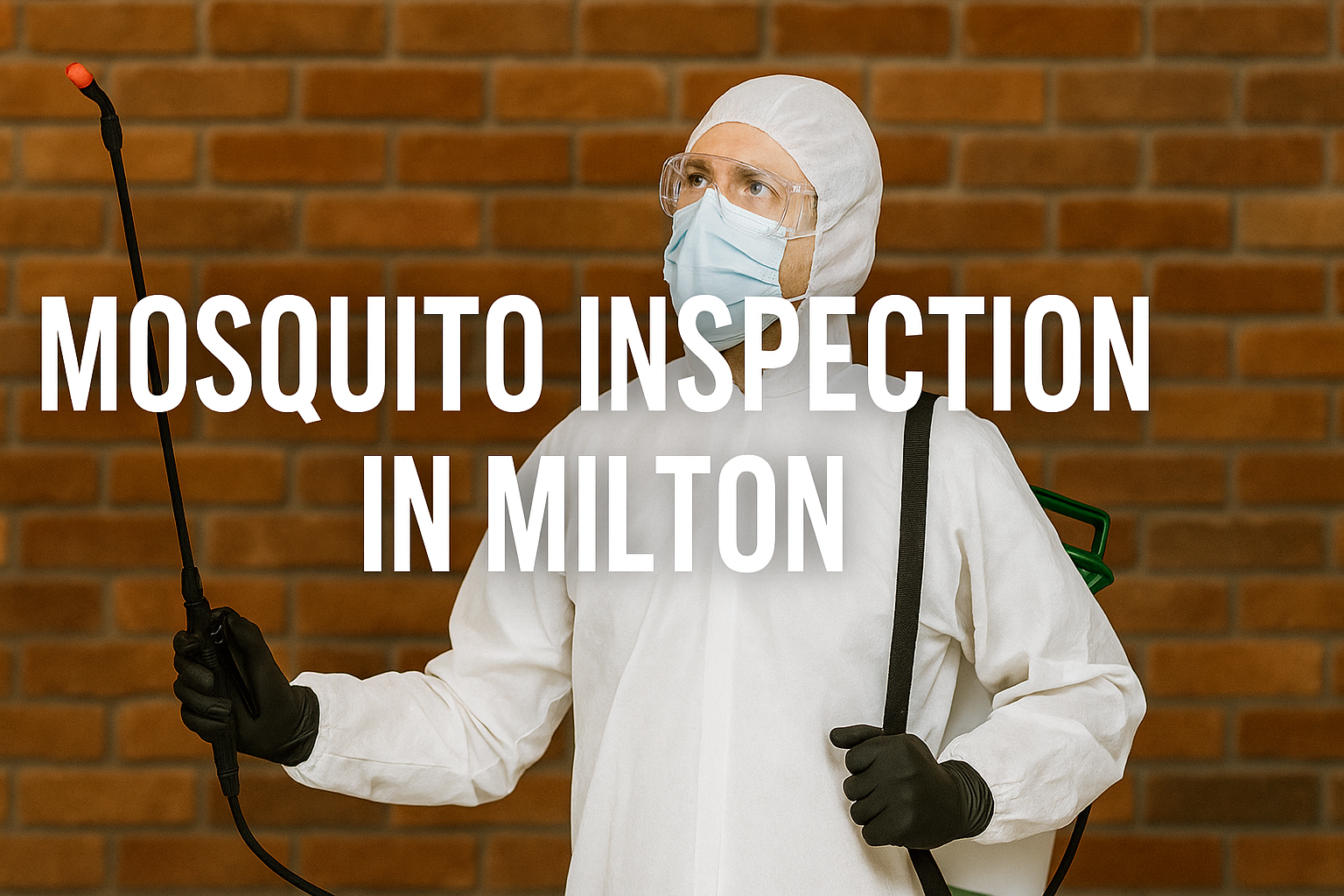Cricket Infestations in Johns Creek: Why It Matters for Your Home
If you live in Johns Creek, you’ve probably heard that familiar cricket chorus at night—maybe in your garage, crawl space, or even the basement. Around here, those chirping sounds mean crickets are settling in, and it’s a growing problem for homeowners in neighborhoods from St Ives Country Club and Medlock Bridge to DoubleGate. That’s why many residents now prioritize cricket inspection Johns Creek as a proactive step to stop infestations before they spread.
What makes Johns Creek the perfect home for these pests? Our mild winters and sticky summers give crickets, like the house and camel types, plenty of time to breed and roam. Once they get indoors, crickets don’t just keep you up at night. They’ll munch on clothing, chew through boxes, and can even damage stored household goods. And if you store old items in seldom-visited areas, you might not notice these pests until the problem is hard to ignore.
The worst cricket activity kicks in from late spring through fall, so waiting it out isn’t usually an option. While a few stray chirps might seem harmless, these critters can multiply quickly—especially if basements or crawl spaces aren’t sealed up tight. Left alone, a minor nuisance can turn into a major headache, with small damages that eventually add up.
Cricket inspections by professionals in Johns Creek usually cost somewhere between $85 and $175, depending on how big your property is and how widespread the infestation might be. Some folks try over-the-counter sprays or baits, but experience shows that stubborn cricket problems need more than DIY solutions. Local experts have the know-how, tools, and experience to zero in on infestation spots—and keep the problem from coming back.
This article will walk you through the essentials: what to expect from a proper inspection, ways to keep crickets out in the first place, and signs that it’s time to bring in the professionals. If you want results that last, you’ll see why working with a local expert makes all the difference for your home’s comfort and your peace of mind.
Curious about your options? Read on for step-by-step guidance, smart prevention tips, and a clear breakdown of costs so you can make the best (and most cost-effective) decision for your property in Johns Creek.
What Drives the Cost of Cricket Inspections and Treatments in Johns Creek?
If you’ve been hearing that tell-tale chirping or catching little brown jumpers darting through your home, you’re probably wondering what it’s going to cost to get some real answers—and real results. Cricket inspection Johns Creek pricing and treatment costs aren’t one-size-fits-all, and that’s because several key factors come into play, many unique to our local neighborhoods.
- The Size of the Job: A quick check of one musty basement is different from a full-home sweep that includes bedrooms, crawlspaces, garages, and attics. Larger homes—especially in spacious developments like Riverwalk or Country Club of the South—have more places for crickets to stake their claim, and every extra square foot adds to the time and complexity of the job.
- The Severity of the Infestation: Finding a stray cricket or two isn’t the same as dealing with dozens in multiple rooms. More crickets usually mean more hiding spots, damaged belongings, and a bigger chance some are multiplying behind the scenes. The heavier the infestation, the more time and resources it takes to fix.
- Service Type (One-Time or Ongoing): Sometimes a one-and-done visit is all you need, but if crickets keep returning, a recurring treatment plan could be your best bet. Ongoing protection often comes with bundled pricing but will run higher overall than a quick one-off service.
- Emergency or After-Hours Calls: No one likes surprises, especially after dark. Unsurprisingly, same-day or after-hours callouts can tack on a premium—think of it as hazard pay for dealing with jumpy houseguests in the middle of the night.
- Type of Materials and Techniques: Some homeowners want all-natural or eco-friendly options, while others need intensive solutions or physical exclusion work to keep critters at bay. Each choice comes with its own price tag.
- Property Age and Layout: If your home is older with crawlspaces or hard-to-reach nooks, expect a bit more labor—and possibly cost. Customized treatment isn’t always cheap, but it’s often the only way to solve persistent issues in unique properties.
Most folks around Johns Creek spend about $85 for a basic cricket inspection Johns Creek, especially if they catch the issue early. But if crickets have settled in, require follow-up visits, or if you’re dealing with more square footage or special needs, don’t be surprised if the total runs $250 or more. The best way to keep costs—and pests—under control? Don’t wait until you’re losing sleep. Quick action and a little prevention go a long way in keeping those pesky crickets (and repair bills) from multiplying.
What Drives the Cost of Cricket Inspections and Treatments in Johns Creek?
If you’ve been hearing that tell-tale chirping or catching little brown jumpers darting through your home, you’re probably wondering what it’s going to cost to get some real answers—and real results. When it comes to cricket inspection Johns Creek pricing and treatment options, costs aren’t one-size-fits-all. That’s because several key factors come into play, many unique to our local neighborhoods.
- The Size of the Job: A quick check of one musty basement is different from a full-home sweep that includes bedrooms, crawlspaces, garages, and attics. Larger homes—especially in spacious developments like Riverwalk or Country Club of the South—have more places for crickets to stake their claim, and every extra square foot adds to the time and complexity of the job.
- The Severity of the Infestation: Finding a stray cricket or two isn’t the same as dealing with dozens in multiple rooms. More crickets usually mean more hiding spots, damaged belongings, and a bigger chance some are multiplying behind the scenes. The heavier the infestation, the more time and resources it takes to fix.
- Service Type (One-Time or Ongoing): Sometimes a one-and-done visit is all you need, but if crickets keep returning, a recurring treatment plan could be your best bet. Ongoing protection often comes with bundled pricing but will run higher overall than a quick one-off service.
- Emergency or After-Hours Calls: No one likes surprises, especially after dark. Unsurprisingly, same-day or after-hours callouts can tack on a premium—think of it as hazard pay for dealing with jumpy houseguests in the middle of the night.
- Type of Materials and Techniques: Some homeowners want all-natural or eco-friendly options, while others need intensive solutions or physical exclusion work to keep critters at bay. Each choice comes with its own price tag.
- Property Age and Layout: If your home is older with crawlspaces or hard-to-reach nooks, expect a bit more labor—and possibly cost. Customized treatment isn’t always cheap, but it’s often the only way to solve persistent issues in unique properties.
Most folks around Johns Creek spend about $85 for a basic cricket inspection Johns Creek, especially if they catch the issue early. But if crickets have settled in, require follow-up visits, or if you’re dealing with more square footage or special needs, don’t be surprised if the total runs $250 or more. The best way to keep costs—and pests—under control? Don’t wait until you’re losing sleep. Quick action and a little prevention, paired with timely cricket inspection Johns Creek services, go a long way in keeping those pesky crickets (and repair bills) from multiplying.
Why Cricket Problems Hit Harder in Johns Creek
Ever wonder why crickets seem to love homes around Johns Creek? Blame it on our muggy summers and those periodic downpours that keep everything damp. That sticky, humid climate really gets cricket breeding cycles rolling, especially if your yard holds water or your foundation stays wet for days after a rain. Those little pockets of moisture? Perfect hiding and breeding spots for crickets.
What about your actual house? If you’ve got a basement, crawlspace, or your place has been around for a few decades, you’re a bigger target. Older construction and any place with lingering dampness or tiny cracks around the foundation create open invitations for crickets. Once they’re in, basements and lower levels stay cool and nicely humid—just how crickets like it. They’ll duck into cracks you might not even know are there.
Larger homes, or ones with big, fancy landscaping—think Chattahoochee River Club—can be even tougher. More space means more ground for crickets to cover, more nooks to hide, and more places that might need a pro’s constant attention. Honestly, the more elaborate your yard, the more tenacious these insects get. Thick mulch, shady beds, and stone features around the yard hold onto moisture, shooting up your cricket odds.
Let’s not forget those Georgia rainstorms. All that water flushes crickets out of their hiding spots, often right into your home. And when the humidity hangs around for weeks, it keeps those numbers high until the weather changes. This blending of wild weather, leaky foundations, and massive yards makes fixing cricket problems more involved—and yes, can add to the cost as well. It’s not just about spraying and forgetting; sometimes getting lasting relief takes careful inspections, sealing up entry points, and giving your property’s specific needs some real attention.
All these quirks of Johns Creek’s environment mean you’ll want solutions tailored exactly to your home’s structure and climate—not some one-size-fits-all fix. Up next, check out a graphic that lays out how local weather, your property details, and landscaping choices affect both treatment methods and pricing.
Make Your Home a No-Cricket Zone: Simple Steps to Keep Them Out
If you’re tired of that late-night cricket chorus or the surprise hop of a cricket in your laundry, a few common-sense moves can save you from future headaches—and expenses. Stopping crickets from even making it inside is the best way to cut down on hassles and keep your wallet happy.
- Moisture is a Magnet: Crickets love dark, damp spots—so hunt down leaks in pipes, gutters, and around your foundation. If you spot puddles or sweating pipes, fix them up fast. Drying out those hidden corners makes a big difference.
- Clear the Clutter: Stacks of boxes, piles of laundry, or even forgotten bags in your garage or basement? Crickets call those a five-star hotel. Toss out or organize cardboard, old clothes, and unused gear—both indoors and outside.
- Keep the Lawn in Check: In neighborhoods like Abbotts Bridge and The Falls of Autry Mill, it’s easy to let grass and bushes creep up near the foundation. But trimmed lawns and tidy mulched beds don’t just look sharp—they also keep crickets at bay. Make sure to mow regularly and trim plants back so nothing hugs your house.
- Seal Their Entryways: Take a walk around your home and scout for cracks, gaps, or loose vents—especially around doors, windows, or where utilities come in. A simple bead of weather-resistant caulk or a bit of mesh can close the door on unwanted guests.
- Stay Ahead with Routine Checks: Make seasonal sweep-throughs part of your regular routine. Rake up fallen leaves, clear out grass clippings, and haul away yard debris before it piles up. The fewer hiding spots, the fewer crickets you’ll see.
Cricket control doesn’t have to be complicated. With these steps, you’ll build a solid defense against infestations and avoid costly repairs down the road. Want a quick reminder? Check out the infographic checklist below—it’s a handy guide to smarter, year-round protection!
Why Timing Matters for Cricket Control in Johns Creek
If you’ve ever been jolted awake by cricket chirping or found one scuttling across your kitchen floor, you know cricket problems in Johns Creek ramp up fast when it’s warm and damp. From late spring through early fall, neighborhoods like Sugar Mill and Seven Oaks tend to see the highest cricket activity. That’s when crickets are looking for food, mates, and—when autumn cools things down—a warm spot inside your home.
Spring is your best bet for staying ahead of a cricket problem. Tackling entry points now, tightening up doors and windows, and keeping things dry around the house make it a lot harder for crickets to move in later. Don’t wait until you actually see them or hear the late-night concert. Booking a thorough inspection or prevention service before the main surge can be a smart move. It not only helps you skip the emergency stress, but you might also catch off-season deals since the rush hasn’t started yet.
Fall deserves special attention, too. When cooler air rolls in, crickets try to sneak indoors, looking for cozy spots to ride out the season. It’s no surprise that we get a lot more calls as soon as the first chilly nights hit. If you’ve sealed up early or kept things dry over the summer, you’re far less likely to be the house they choose.
Getting the timing right on repairs and prevention—think of it as beating the crickets at their own game—means you’re less likely to be stuck paying for last-minute fixes, sleepless nights, or those unexpected “why is there a cricket in my closet?” moments. Stay ahead of the seasons, and you’ll keep your home calmer, quieter, and a whole lot more comfortable year-round.
Kick Crickets Out—We’ll Make It Easy
Tired of crickets chirping their way into your Johns Creek home? Let Anthem Pest help you reclaim your space. Grab your free, no-pressure property assessment today—we’ll show you just how simple and affordable it is to keep crickets out for good. Our local team is friendly, fast, and committed to your satisfaction.
Give us a quick call at 877-3718-5196 or request your free quote online. Want pest tips and expert advice? Swing by the Anthem Pest Blog for all the latest local insights.
Johns Creek Cricket Inspections: Your Top Questions Answered
If you’re in Johns Creek and hearing nightly chirps, finding crickets in unexpected places, or concerned about property damage, you’re not alone. Here are answers to some of the most common questions homeowners ask about dealing with crickets—and why scheduling a cricket inspection Johns Creek can make all the difference.
- When are crickets most active in Johns Creek?
Crickets usually start to appear as the weather warms up in late spring, and their numbers really pick up through summer into early fall. Warmth and humidity are what bring crickets out here, so expect more activity as the temperature rises. - How do I know if I need a pro to check things out?
If you’re hearing crickets night after night, seeing them in living spaces, or finding unexplained holes in clothing or papers, it’s a good idea to call in an expert. DIY fixes only go so far, and persistent problems often point to a bigger infestation. - Will crickets damage my house?
Luckily, crickets aren’t known for eating through your walls, but they can damage stored clothes, important paperwork, and sometimes even insulation. Large infestations can quickly get out of hand, so it’s best not to ignore a growing problem. - How long will a cricket inspection take?
Most visits last between 45 and 90 minutes, depending on your home’s size and how easy it is to get around. That time lets a technician check for hotspots, hidden entry points, and any early damage. - Which Johns Creek neighborhoods see the most issues?
Areas with older construction or higher moisture—like Abbotts Bridge, Medlock Bridge, and Riverwalk—tend to see more cricket trouble. If your home is in one of these spots, a little extra vigilance goes a long way. - Are the treatments safe for my family?
Absolutely. Professional pest control teams use EPA-registered products applied with your pets and kids in mind. Safety is always part of the plan. - Can I handle cricket prevention myself?
Some steps—like sealing cracks, clearing clutter, and fixing that leaky pipe—definitely help. But if crickets keep coming back, professional help is the best way to finally put an end to the cycle. - How often should I schedule an inspection?
Most folks do well with a yearly checkup, but if you spot frequent or seasonal issues, consider having your home inspected more often. Routine inspections catch small problems before they turn into big ones.
If you’ve still got questions, don’t hesitate to reach out. A quick chat with a local cricket expert can give you peace of mind—and help you keep your home quiet and cricket-free.











